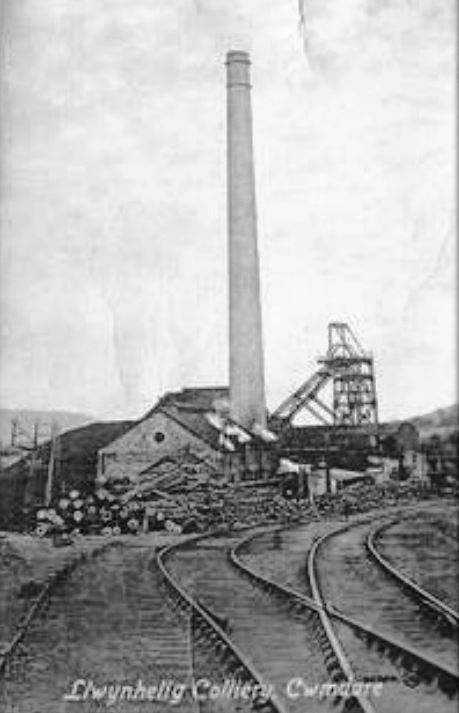 Near Aberdare, Cynon Valley
Near Aberdare, Cynon Valley
This mine was opened to work the Gorllwyn seam for steam coals to the west of Aberdare by David Rees Llewellyn cl905 with the Llwynhelig Colliery Company being incorporated on the 15th of January 1912 with a capital of £20,000. This company was a member of the Monmouthshire and South Wales Coal Owners Association. On the 18th of June 1909, this mine was working the Gorllwyn seam which was only 18 inches thick with two inches at the bottom of the seam also being cut by one of the first electric coal cutters in the coalfield. The bar to cut under the coal was 3 feet 9 inches long and had 32 teeth.
This MINE employed 12 men in 1907 and 164 men in 1913 when managed by D.R. Llewellyn, 97 men when managed by J. Evans in 1915/6, 225 men in 1918 when managed by Rees Davies, and 200 men in 1919 when it was still managed by Mr. Davies. It produced 50,000 tons of coal with 250 men in 1920 and employed 255 men in 1923, 270 men in 1927 when the manager was G. Barling, 200 men in 1932 and 212 men in 1935 when the manager was still G.B. Barling.
Llwynhelig Drift closed when it abandoned the False Gorllwyn and Gorllwyn seams in 1931 and Llwynhelig closed in 1946 when it abandoned the Gorllwyn and Gorllwyn Fach seams. In 1934 D.R. Llewellyn and Sons Limited was based at the Bwllfa Colliery with the following as its directors;
Sir David R. Llewellyn, W.M. Llewellyn, H.H. Merrett, Sir John F. Beale, T.J. Callaghan, J.H. Jolly and D.J. Davies. The company secretary was Daniel Morgan. In that year it controlled four collieries, employing 925 men that produced 156,843 tons of coal.
On the 29th of November 1911, William Stanton, aged 30 years, and a collier, was walking to his workplace when the roof of the roadway collapsed and killed him. On the 6th of November 1929, Joseph Carter, aged 17 years, and an assistant collier died in an explosion of gas, while a few days later on the 28th of November, John Mason, aged 28 years, and a collier, was buried under a roof fall when two posts discharged. He died on the 27th of October 1930.
Some statistics:
- 1907: Manpower: 12.
- 1909: Manpower: 45.
- 1910: Manpower: 66.
- 1911: Manpower: 32.
- 1913: Manpower: 164.
- 1915: Manpower: 97.
- 1918: Manpower: 225.
- 1919: Manpower: 200.
- 1923: Manpower: 255.
- 1924: Manpower: 282.
- 1925: Manpower: 270.
- 1927: Manpower: 297.
- 1928: Manpower: 273.
- 1929: Manpower: 290.
- 1930: Manpower: 212.
- 1933: Manpower: 10.
- 1934: Manpower: 14.
- 1938: not working.
Information supplied by Ray Lawrence and used here with his permission.
Return to previous page
